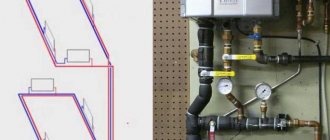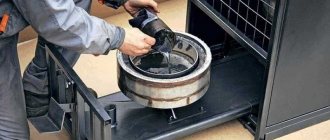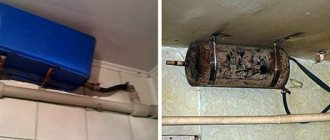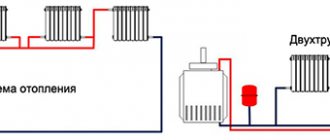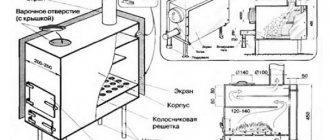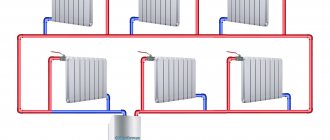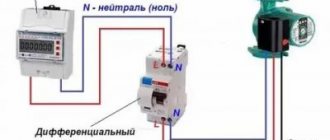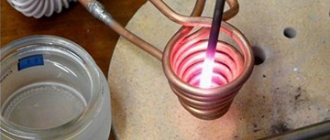Choosing a stove for a country bath
The choice of a heating unit for a steam room has a number of features, and they need to be taken into account:
- The temperature of heated stones is 550-600 degrees. The oven is heated for 4 hours. Among the main disadvantages of the heater stove is its heavy weight and significant dimensions. And also in the cold season, additional heating will be required not only for the steam room, but also for the entire bathhouse.
- An easier way to heat a steam room is to install a stove made of steel or cast iron. Steel structures are inexpensive. Cast iron units retain heat remarkably well, and in addition, do not burn out. Metal appliances have a reservoir for stones. The more of them there are, the more evenly the heat is released and the longer it is retained (read: “How to install a stove in a bathhouse, tips for self-installation”).
Features of metal furnaces:
- they can be melted in less than an hour;
- they are small in size and light in weight;
- cool quickly because they have a low heat capacity;
- emit harsh heat.
Brick stoves installed in bathhouses are subject to certain requirements:
- their kindling cannot take more than 4-5 hours;
- brick stoves for a bath should have high heat capacity, not overheat the steam room and retain heat for a long time;
- It is necessary that the heat generated is soft and pleasant.
Which stove is better for a bath - types of heating sauna stoves Which stove to choose for a summer house, watch the video:
Heating system options
All options for organizing a heating system can be classified based on such criteria as the type of coolant. Thus, heating can be:
- Air;
- Steam heating;
- Electric;
- Heating with hot water.
Heating systems can be grouped based on their energy source. Thus, the heating system can use the following as an energy source:
- Liquid fuel, such as diesel fuel;
- Gas;
- Solid fuel, such as wood or coal;
- The coolant can also be electricity.
Any heating of a country house has both its advantages and disadvantages. If we take the price of the coolant as a basis, then the most expensive option will be a heating system powered by diesel fuel, and the cheapest will be gas heating of the dacha in winter. Although gas is the cheapest coolant, not all holiday villages have access to the main line.
Ratio of prices for different types of fuel
If you choose a heating system based on the price category, then you must also take into account the costs that will go into organizing the heating system, as well as the income required to transport the coolant. Heating with wood has its disadvantages, since this type of fuel first needs to be brought, then it needs to be chopped or sawed, and also a place for storage must be found.
When choosing country heating, you will have to adhere to such criteria as:
- Costs for purchasing coolant;
- Heating system installation costs;
- The cost of equipment that is necessary to organize a heating system;
- The cost of repairing the heating system, as well as the funds that will be spent on its maintenance.
Another important criterion that may influence the choice of heating system is the period of stay at the dacha. Since people come to the dacha mainly in the warm months, it does not need to be heated all year round.
Country houses for the summer. Quite a lot of country houses are made of material such as wood. The walls of such houses are not able to retain heat indoors for a long time, therefore, if the house is not heated, the room temperature will not be much different from the street temperature. A wooden house can be quickly heated using an electric heater or stove heating. Such a house will not be suitable for living in the winter months. In this case, it will be necessary to insulate it additionally, as well as install another, more efficient heating system for country houses.
Wooden cottage for the summer
Country houses for the whole year. Homes that are intended to be used throughout the year are usually prepared for harsher conditions from the start. People who live in their country houses all year round probably make sure that they always have water and light. Summer houses are usually built from panel panels, but for a more permanent type of building it is necessary to use brick or concrete. The walls and foundations of such houses should be made of materials that can trap warm air for a longer period. In a permanent building, you can install both stationary heating for a country house and other types.
A brick cottage is suitable for normal living all year round
Heating options for cottages: selection criteria
If the owners plan to use the dacha in winter, then they will have to think about how it will be heated. In order to wisely choose heating options for your dacha, options for which you can spy on the Internet, you need to consider some of them and determine which one is most suitable for a particular home.
Cottage heating options
If previously there were only two options available for use in suburban conditions - a wood-burning stove or electric heaters, provided that electricity was supplied to the dacha, today the choice of ways to heat a dacha house is much wider.
In addition, every owner of a country house, who has a little imagination and certain knowledge, can independently figure out how to economically and efficiently heat a home using one or more methods, combining them with each other. Perhaps a consideration of the heating systems below will help someone make a choice from ready-made solutions or even design their own innovative option.
Heating selection criteria
First, you need to decide what functions heating devices should perform, since sometimes simply heating rooms in a summer cottage is not enough.
- The main criterion, naturally, should be efficient heating of the house, maintaining a comfortable temperature in the premises in any weather.
- For comfortable living, it is advisable to consider heating the bathhouse (if there is one) or heating water for the shower.
- Cooking and boiling water for food needs - brewing coffee, tea, etc.
- Drying wet clothes and shoes, which is especially important in inclement autumn or winter weather.
- Drying vegetables and fruits for the winter.
Having identified the functions that you would like to have in combination with heating, you can move on to considering its various options.
Heating system powered by a boiler
It is advisable to install a heating system that uses a coolant heated in a boiler and supplied to radiators for heat exchange in a dacha if it is used for housing all year round. At the same time, you need to remember that very often you will have to go through all the authorities to obtain permission, draw up and approve a system installation plan, so you immediately need to estimate the cost of not only purchasing all the necessary equipment for installation, but also completing the documentation.
From a convenience point of view, the best option is heating using a boiler
Selecting a heating boiler
The choice of heating device depends on several factors:
- Availability of the necessary source of fuel or energy carrier on the site. For example, if a gas supply is connected to the dacha, then the most optimal option would be to choose a unit that runs on gas. In addition, boilers are produced that can operate on electricity or on solid or liquid fuel, as well as mixed-type heating devices in which, if necessary, the energy carrier can be replaced by one another.
- The area of the heated premises, that is, it is necessary to determine the required power of the unit. To do this, calculate the amount of thermal energy required to heat 10 m² of a house. This parameter, of course, largely depends on how insulated the building that is planned to be heated is, and with high-quality thermal insulation, you can start from the proportion of 1 kW of energy per 10 m², with an average ceiling height of up to 3 m.
If a country house has thin walls without thermal insulation, then heat will not be retained in the house for a long time with any type of heating and with any boiler power. The funds spent on the purchase and installation of all elements of the system, as well as on energy resources, will simply be thrown away.
- Availability of space for installation of equipment, since some boilers necessarily require a separate room or a reliable base due to their technical characteristics.
In specialized stores you can find for sale not only floor-standing heating boilers, but also wall-mounted ones, which are small in size.
As a rule, compact wall-mounted options do not have excessively high power, but if the country house is small and well insulated, then it is possible to choose such a boiler with suitable parameters.
Boiler placed on the wall
Floor-standing boilers have massive shapes and are quite heavy. For them, it is necessary to prepare a special solid platform or even make an extension to the house in which the boiler room will be located.
More powerful units are usually floor-standing
- Any boiler (except electric) requires a chimney. Its specific structure and parameters will depend on what fuel the unit runs on and what its power is.
- Its price will largely depend on the type and power of the heating installation.
It is worth considering in more detail the positive and negative aspects of units operating from different energy sources. First, about the obvious advantages :
- A boiler running on natural gas is quite economical, has high power and is reliable in operation.
- Solid fuel boilers do not require additional connection to the gas mains or to the power supply system (if they are not equipped with electronic automation). Solid fuel in many regions of the country is much more affordable compared to electricity and gas. In addition, such boilers can often use various types of fuel - coal, firewood, peat briquettes, pellets.
- Electric boilers have a relatively low cost, are compact in size, and are also easy to install and do not require special intervention during operation. (more details about the features of electric boilers can be found in the hotel publication of the portal).
Now let’s “go through” the disadvantages of various units:
- The obvious “disadvantages” of installing a gas heating system include the expensive procedure for drawing up a plan and directly connecting the gas supply, which requires numerous approvals. In addition, not every dacha village has a gas pipeline yet.
- A boiler running on diesel fuel requires a large volume of it. And although diesel fuel has a relatively affordable price, a problem can be created by the lack of capacity to store at least a minimum reserve. In addition, the fuel itself has a specific odor, which intensifies when it burns. Another big disadvantage of such units is the loud noise during operation, so you cannot do without an additional separate room for an oil-fuel boiler.
A modern diesel boiler cannot operate without consuming electricity (albeit minimal), which means that if there are frequent interruptions, then you need to consider a backup uninterruptible power supply.
- A solid fuel boiler needs to be loaded fairly frequently, and fuel reserves require an appropriate location and conditions.
- An electric boiler (with the exception of induction ones) is not very durable, and, naturally, is completely dependent on the availability of electricity. Unfortunately, in holiday villages, complete power outages or surges with large voltage amplitudes are not at all uncommon. Therefore, in this case, it is imperative to have an alternative, non-electric heating option, which will inevitably entail additional costs.
For ease of perception, a table is provided that summarizes some of the distinctive features of various types of heating installations:
| Characteristics | Room heating method | |||
| A gas boiler | Liquid fuel boiler | Electric boiler | Geothermal heat pump | |
| Equipment cost (price) | average | average | low | high |
| Boiler room area for installation of equipment in sq. m | 6 | 6 | 3 | 6 |
| Energy source | Natural gas | Diesel fuel | Electricity | Electric current and heat of earth, water, air |
| Energy costs | average | big | very big | The heat of the earth is unlimited and free, electricity costs for equipment operation are minimal |
| Lifetime | 15-20 years | 15-20 years | 5-8 years | Up to 50 years |
| Fire hazard of the boiler during its operation | dangerous (constant fire) | dangerous (constant fire) | dangerous due to the possibility of shorting the wiring | safe |
| Explosion hazard | dangerous | dangerous | safe | safe |
| Level of environmental hazard during operation | harmful, emits CO and NOx | harmful, emits CO and NOx | harmless | harmless |
| Ventilation | necessary | necessary | need not | need not |
| Service | regular inspection | regular inspection | inspection if necessary | inspection if necessary |
| Reliability | high | high | high | very high |
| Autonomy in the absence of energy supply | backup power supply required | backup power supply required | does not work | works with a backup electric generator of 6 kW |
| Possibility of room cooling | does not provide | does not provide | does not provide | provides |
Combination boiler
Separately, it is worth saying a few words about the combined type of boiler, which can, if necessary, switch from one fuel to another.
Combination boilers have increased versatility
The options here can be different: “wood - gas”, “wood - electricity”, “liquid fuel - electricity” and others. This can be very convenient - if, for example, the power goes out, then the boiler can be continued to be heated, say, with wood or peat briquettes, or switched to diesel fuel. Sometimes combination boilers have special replaceable or built-in burners and are equipped with a hob, which can be simply irreplaceable in country conditions. Therefore, it is often the combination boiler that becomes the best option for a country house, provided that the place for it is properly prepared.
Any of the modern combination boilers has a built-in automatic system that monitors the health of the unit, fuel supply and controls its operation. For example, if the boiler was heated with solid fuel, and it burned out, and the temperature in the heating circuit dropped below the set value, electric heating is switched on.
Hot water supply
At the dacha, you also cannot do without hot water - if you live there permanently, then it is simply necessary for daily hygienic needs. Of course, in the summer you can use a summer shower, where the water is completely heated by the sun’s heat, but in winter this option is not suitable. If you don’t want to heat water on a hob the old fashioned way, then it is best to install a double-circuit boiler when installing heating, which will not only provide space heating, but will also supply hot water for a variety of needs.
A double-circuit boiler will provide both heat and hot water
You can use another option - this is a single-circuit boiler with an indirect heating boiler attached to it. In this case, a pump is built into the system, since the force of natural circulation of the coolant will not be enough. This option requires quite a lot of space to install all the necessary elements, so it will be necessary to allocate a room for this purpose or make a small extension.
Boiler in conjunction with an indirect heating boiler
In any case, if you decide to use a boiler for heating, you need to carefully consider all the nuances, and when purchasing it, carefully study the characteristics and clarify unclear information from the sales consultant.
Prices for the range of heating boilers
Heating boilers
Video: recommendations for using boilers in the country
Geothermal heat pump
In the comparison table above, the rightmost column is occupied by the characteristics of the heat pump. There is currently a lot of talk about it as an alternative source of thermal energy. Since this heating method is not as popular and well-known as heating from a boiler, it is worth devoting a few lines to it.
External units of geothermal installation
A geothermal heat pump is a system for creating a microclimate in a house, which operates from the heat of the earth.
At its core, it is a kind of air conditioner with two circuits - an evaporator and a condenser. In winter it works as a source of heat, and in summer it produces coolness. The process occurs due to the difference in soil temperature at different depths, and to increase the efficiency or reduce the costs of the cooling and heating system, a geothermal pump can be used in conjunction with heating a house using solar energy.
The operation of geothermal heat pumps is based on thermal inertia, since the temperature of the earth at a depth below 6 m is approximately the same as the average annual air temperature in the region, and it practically does not change regardless of the season.
In addition, there are similar systems that can use the thermal energy of air or water.
- “Earth-to-water” is the most common type of heat pump, which extracts heat from the ground using coolant circulating through pipes buried in the ground, and then, after conversion, transfers it to heating devices.
Use of earth's thermal energy
- "Water-to-water" - this type of pump obtains heat from water, in which case the primary heat exchanger is immersed in a natural body of water, or a deep well is drilled for the probe to reach groundwater.
A body of water or an underground aquifer can be used as a heat source
- “Air-to-air” - a heat pump operating on this principle receives energy from the air. This option does not require excavation, drilling wells or the presence of a nearby body of water. The energy is obtained using a probe block that uses the temperature amplitude of the surrounding air. All the main elements of such a system are located inside the building, which eliminates the risk of damage.
We learned to use the thermal energy of air
Heat pump prices
Heat pumps
Cost-effectiveness of a geothermal heating system
A home heating system using a heat pump will justify the cost of its installation only after several decades. It cannot operate on its own and will require electrical energy to keep it functioning. So, to produce 10 kW of thermal energy, the heat pump will need to consume 2.5 ÷ 3 kW of electricity, that is, the net gain will be in the region of 7 ÷ 7.5 kW, which, in principle, is not so small. However, if you look at this issue from the point of view of payment, then it turns out to be not much cheaper than when operating a conventional electric boiler, but the material costs of installing these devices are simply incomparable. In addition, to install a system with a heat pump, you need to do a tremendous amount of work, but an electric boiler is connected quickly and easily.
If there are frequent power outages in the village where the country house is located, to operate the geothermal heating system it is necessary to provide a backup power source - a generator running on a different type of fuel with a power of about 6 kW. The purchase and permanent installation of such a power unit will also lead to considerable costs.
To sum it up, we can say that this way of heating the house is without a doubt environmentally friendly, and it has a very bright future. But its current economy must still be questioned. Therefore, before taking on such a business, it is worth making careful calculations and soberly assessing the profitability of such an undertaking.
Infrared heating of the cottage
This type of space heating is based on the use of special infrared emitters or infrared film as a heat generator. This method of heating a house can be used both as the main and as an auxiliary one, in combination with other types of heating.
Operating principle of an infrared heating system
The principle of operation of infrared heating is that the heater transmits radiant thermal energy in the infrared range (by analogy with the thermal energy of the Sun) to all surrounding elements of the interior, as well as the floor and walls, and they, in turn, when heated, conduct a wide-area heat exchange with air.
It should be immediately noted that this type of heating of a country house will be effective only if all elements of the building - the ceiling, walls, floor, windows and doors - are well insulated. If this condition is met, then heating using infrared radiation will achieve the following results:
- Create a comfortable microclimate, that is, temperature and humidity in the premises corresponding to the normal well-being of residents.
- Ensure the most favorable temperature distribution across the height of the room.
- Preserve clean air, since with this method there is no intense air circulation, horizontal convection currents, especially along the floor, which always carry a lot of dust with them.
Infrared heaters
This type of heater is fixed to the ceiling, at a height of 2.3 ÷ 3.5 m, usually in the center of the room. The main thing to take into account is that the residents of the house are not constantly located directly under them, that is, they should not be hung above a bed, dining or desk, children’s play area, etc.
Ceiling infrared heater resembles a regular lamp
It is not recommended to mount infrared heaters on ceilings lined with PVC panels or close to windows, as heat loss in this case will increase.
Infrared film
In addition to heaters with infrared radiation, special film elements can be used to heat a country house, which are placed both on the ceiling and on the walls and floors.
Another option is film IR emitters
The film can be placed under various decorative coatings. So, on the floor it can be parquet or linoleum, carpet or laminate, on the walls - ceramic tiles or wooden lining, on the ceiling - plasterboard or the same lining.
Possible layout of infrared film heaters
However, there are some limitations. For example, you cannot install infrared film on the ceiling; you plan to decorate it with fabric. It is incompatible with suspended ceilings, PVC panels or materials containing metal (for example, foil).
Advantages and disadvantages of infrared heating
This type of home heating has its positive and negative sides. You need to know about them before choosing this particular option for installation in your dacha.
Advantages of IR heating
The “advantages” of using infrared heating include the following:
- Providing heating of the room in a short time after turning on the system, since surfaces quickly heat up and give off heat to the air.
- The heat obtained in this way does not dry out the air at all, so the rooms maintain the required level of humidity.
- The system does not make any noise when operating.
- The temperature in the room can be maintained at the desired level by very accurately setting the desired temperature using a thermostat.
- The infrared system is not afraid of voltage surges, which often happens in holiday villages.
- Installing the film is quite simple and quick, so you can easily handle this work yourself.
Installation of infrared film heating can be done on your own
- The system does not require preservation for the winter - it only needs to be turned off from the network. When you arrive at your dacha in winter or early spring, you can be sure that the house will not be cold at night. All you have to do is plug in the system and literally within half an hour the house will have an acceptable temperature.
- In addition, if such a need arises, the film can be easily dismantled and moved for installation in another room or building.
- The system is easy to operate and does not require maintenance.
- Long-term operation - manufacturers guarantee that with proper installation, such elements will last for several decades.
Negative qualities
It would seem that after so many advantages, one can not even pay attention to the negative aspects, since they should be completely insignificant. However, unfortunately, this is not entirely true.
The “disadvantages” of infrared heating include:
- If electricity is often cut off in a holiday village, then an infrared heating system alone will not be enough. In this case, it is necessary to additionally have an option that operates on a different type of energy.
- This type of heating is not as economical as manufacturers advertise it. For example, for 1 m² of area, depending on the quality of insulation and the height of the ceilings of the room, you may need from 5 to 20 W, and for a house with an area of 100 m², at least 700 kW will be required per month. Therefore, before purchasing and installing film, you need to make careful calculations of your real capabilities.
If the reader would like to find out more detailed information about the calculations and installation of infrared heating , then this can be done by following the recommended link to a special publication on this topic.
Stove heating
Stove heating can be called the most reliable. It is widely used both as the main type of heating at home and as an auxiliary one. The stove does not require connecting mains for energy - the homeowner himself must take care of the fuel in advance. If a supply of firewood or coal is prepared on time, warmth in the house will be ensured. If there is no electricity supply at the dacha, the stove will not only heat the house, but also “feed” the whole family, as it often allows you to cook lunch or dinner, heat water and even bake bread.
The traditional way of heating a dacha is a stove
Depending on the area allocated for the stove, you can choose the appropriate model, size of the stove and material for its manufacture.
You can build a traditional brick oven - it may well have compact dimensions and an aesthetic design. Or there is the opportunity to purchase a ready-made version, made of cast iron with or without stone trim.
In addition, both brick and cast iron stoves can have several options for their functionality:
- A heating system that will only warm the house.
- A heating and cooking option that has a hob, oven and even a hot water tank, allowing not only to cook food, but also to satisfy the need for hot water.
- A fireplace stove, which can be either simply heating or have a stove and oven, and at the same time create a very special coziness in the room.
Cast iron stove-fireplace
"Pros" and "cons" of stove heating
If you decide to choose this particular option for heating a country house, you need to familiarize yourself with the negative and positive aspects of using stoves
Advantages of stove heating:
- Complete autonomy and independence of the system from external factors.
- Affordable fuel price. If there is a forest or forest plantation in the area of your summer cottage, then during the summer you can make a supply of firewood from fallen trees and dry branches - in this case, you will get fuel for nothing.
- The profitability of this type of heating is undeniable, since it will cost several times less than a boiler running on gas, electricity, or diesel fuel.
- If the oven is well maintained, it is always ready for use. In the case where the cottage is mainly used only in the summer, there will be no problems with freezing of the equipment, since the stove will not be affected by low winter temperatures.
- The ability to cook food and heat water are functions that are always necessary in suburban conditions, and which are not inherent in all heating systems.
- If you choose a cast iron unit, it will not take up much space, and the site itself will not require labor-intensive preparation, since this version of the furnace is not as massive as one built from brick.
Compact cast iron stoves take up very little space
- It is quite possible to install a cast iron stove yourself.
Negative points in using stove heating:
- Stove heating requires constant monitoring during its operation, as well as periodic, fairly frequent loading of fuel.
- A cast iron stove without a water circuit will not be able to heat more than one room.
- The efficiency of stove heating is significantly lower than when heating a house with a boiler. If the average efficiency of even not the most “sophisticated” devices reaches 80%, then for stoves it is only 50 ÷ 60%.
- Any stove requires periodic maintenance, more frequent than a boiler, since to create good draft, on which the efficiency of its operation depends, annual monitoring of the chimney and its regular cleaning are needed.
- There is no need to build a separate room for the stove, but if you choose a brick stove, it will take up quite a lot of space. Although you can get out of this situation by placing it between rooms, by building it into the wall.
- It will be quite difficult to build a brick oven yourself, since this requires special knowledge, skills and dexterity in work.
more about the stove heating option from a special article on the portal.
Prices for fireplaces and stoves
Fireplaces and stoves
Video: a very original option for heating a dacha from one stove
If the publication helped the reader at least preliminary decide on the choice of heating system for the dacha, then that’s great. But don’t rush to leave the pages of our portal! Go to the section on stoves and heating systems - there are detailed explanations and practical guides for calculations and installation for each type. Without a doubt, everyone will be able to find the best option for themselves.
Design of a heating system for a summer residence
Considering various heating systems for a summer residence, it is worth saying that almost all of them are equipped according to a similar principle and have the following set of structural elements in their design:
heating boiler, which serves as the main heating equipment;
container for coolant. In this case, it is necessary to decide in advance what kind of heating system the country house will have - closed or open. Thus, the open version provides water supply from a centralized system, while the closed type requires a regularly replenished container that is not connected to the central water supply. Speaking about the coolant, it is worth noting that this particular element is especially often mentioned in closed heating systems, where it is customary to add special additives to it that protect the structure from corrosion and prevent the water in the system from freezing;
a pump used to pump water through the system. It would be more correct to install this element in the area where the coolant is removed, that is, when water moves from the battery back to the boiler after the main amount of heat has already been given off;
pipeline
It is important to draw up a diagram of the installation of all pipes in advance and think over the principle of their location - whether they will create a single- or double-circuit system. So, in the first case, the coolant circulates through one pipe, and the dual-circuit mechanism provides for the supply and removal of water through different pipes;
radiators
At the same time, it is important to correctly calculate the number of sections of these batteries and provide for the possibility of increasing new ones, which is the simplest and most effective way to increase the power of heating equipment;
temperature sensors that allow you to configure the system to the desired power, as well as completely disable its operation.
Short instructions
Installation diagram of a parapet type gas boiler.
Technical documents that contain characteristics of the area and a plan for supplying gas from the central pipe are drawn up and carried out by licensed organizations. Usually these are technical specialists of the gas campaign.
All installation of gas connection equipment (water heaters, boiler, meter, pipes) is done by a team of installers.
Conclude an agreement for gas supply from the central pipe and an agreement for the installation of equipment. These are completely different jobs, and they are carried out according to different estimates.
The room where you plan to install gas equipment must have ventilation, a window, lighting and a concrete floor. If you want to install the entire set in the kitchen, then you will have to drill holes in the doors and make ventilation near the gas installations.
After installation is completed, you need to conclude a contract for the maintenance of gas equipment. Call an employee from the gas control department and draw up a report on putting equipment and gas meters into operation.
Related article: Bedroom design 8 sq m: design rules, choice of furniture
Take the commissioning act and enter into an agreement with the customer service department of the gas campaign for the supply of gas and payment for it at the meter.
Gas heating of a country house
If at the dacha it is possible to connect to the main gas pipe, then the question of how to choose heating for a dacha house disappears by itself: the boiler is able to heat a country house in a short time, and the cost of the energy spent will not be too burdensome for the owners.
Small, low-power wall-mounted models are suitable for dachas; they are more than enough to heat a small house. In a gas boiler, the coolant, just like in an electric boiler, is water or antifreeze. This heating scheme assumes the presence of an installed pipeline heating system in the house.
When heating a country house, a gas boiler can operate completely autonomously (without consuming electricity). In this case, the water in the pipeline does not circulate forcibly due to the operation of the pump, but independently according to the principle of convection. That is, hot water, expanding when heated, pushes cold water into the heating zone, and so on without interruption. However, to install a non-volatile boiler, it is necessary to take into account the slope of the pipes and the height of the heat generator relative to the radiators and heating pipes.
Despite the fact that a gas boiler can be installed with your own hands, it is unlikely that you can do it without a service specialist; his responsibilities include connecting the boiler to the gas main and starting the heating unit for the first time.
If you are determined to take advantage of the benefits of a gas boiler, but do not have the opportunity to connect to pipeline gas, then you will have to install a gas tank. These welded cylindrical or spherical tanks are made of steel and are installed underground. They store liquefied gas under high pressure. The container is replenished as needed. It is worth noting that such a gas supply scheme for a dacha will entail significant costs not only for the installation of the tank itself, but also for its regular replenishment.
Regardless of whether it is a gas boiler or an electric one, it is necessary to provide for the possibility of water freezing in the pipelines and, as a result, their destruction. Using antifreeze as a coolant or using pipes with a heating cable under insulating insulation will help to avoid such an accident. In addition, the boiler protection unit will help to protect the heating system. Since its operation requires electricity, emergency power supply to the boiler from a diesel generator should be provided.
Installation of gas heating at the dacha
Those whose property is located in close proximity to the gas pipeline will not have problems solving the problem of how to install gas heating in their country house. It is better to entrust the work of its installation to specialists with extensive experience. But doing this with your own hands will be difficult.
The heating in this case will be water, and the unit will be gas. The boiler must be installed in a separate room measuring from 4 to 8 square meters with a ceiling height of at least 2.5 meters, which depends on the size of the boiler, which can be wall-mounted or floor-mounted. The presence of a gas unit requires the construction of a chimney, but this should be done only after purchasing a boiler, since each model has connection features.
Stove heating
The relevance of stove heating today is undeniable. This option is well suited when the goal is to provide heating for the dacha with your own hands.
A Russian stove can heat a country house well, but only if it is heated well. The walls of this oven are thick, it takes a lot of time to warm them up, but they also retain heat very well.
Although this stove has considerable dimensions, it also has positive qualities: it is heated with wood and is easy to operate. But today these ovens have faded into the background, giving way to modern heat storage and convection ovens.
Heat storage furnaces
Heat storage furnace
The walls of these stoves accumulate heat and release it into the room. As already noted, it takes a lot of time to warm up such a stove (depending on the thickness of the masonry). The heat accumulated by the walls is radiated into the room for a long time until the walls cool down.
Convection ovens
Convection oven
Heating with these stoves occurs by heating room air. An excellent option is the Buleryan stove. It heats the room quickly and evenly and can operate for a long time on a full load of fuel (up to 12 hours). However, difficulties may arise with its location, since it requires a considerable distance from nearby objects and walls.
A serious problem in using Buleryan-type stoves is the formation of condensation in the pipe, which, when heated, can emit an unpleasant odor that penetrates the home.
You can also note the Breneran and Professor Butakov stoves, which also do a good job of heating the room. For convection ovens, chimney insulation is mandatory. It should also be noted that you can install such stoves with your own hands, without resorting to the help of professionals, but you cannot do without the necessary knowledge in this matter.
Gas heating: possible failures
Gas heating has not only advantages, but also disadvantages.
It depends entirely on the presence of gas in the pipes. Lack of gas supply means lack of heat and hot water in the house. Finding a way out in this situation will not be easy. It is better to provide for unforeseen circumstances in advance by installing a boiler that will operate simultaneously on gas and electricity. Not everyone can afford the cost of such an acquisition. But the warmth in the dacha will be guaranteed. Many dacha owners additionally install ordinary stoves or fireplaces in case of lack of gas and electricity.
But if nothing happens with the transportation of blue fuel to the dacha, the installed gas boiler to supply heat to the house will work efficiently and durable, creating a unique atmosphere of comfort in it.
The best posts
- Master class on face painting for beginners: butterfly and cat with video and photo
- Nomex fabric: properties, composition and application
- Carpet for a classic style bedroom: shape, texture, color - how to choose?
- Crochet sleeveless vest: patterns and description of raglan for beginners
- Water-heated floor under tiles: do-it-yourself installation
- Papier-mâché penguin
- Gardens in miniature: how to make a mini-garden with your own hands and what they are like
- Simple seven strand bracelet
Solving the heating problem
The operating principle of water heating is not complicated. The design consists of a heating device, pipes and heating devices, which are closed into a single system.
The heating boiler creates the required temperature of the coolant, which uses water or antifreeze. The heated coolant moves through the pipeline to radiators, which are installed in heated rooms. The latter transfer the resulting heat into the atmosphere of the room, thereby warming it up. The coolant that has given off heat, moving through the pipes, returns to the boiler, where it is heated again. Then the cycle repeats.
Depending on the method of moving the coolant, the heating system can be with natural or forced circulation.
Coolant circulation system
Natural circulation
The operation of the heating system is based on the difference in density of heated and cold liquid. The heated coolant has less mass, so it moves upward when moving through the pipes. As it moves, the temperature decreases and the density of the substance decreases, so it tends downward when returning to the boiler.
The operation of the heating system in this case does not depend on electricity, which makes it completely autonomous. In addition, the design of such heating is significantly simplified.
The disadvantage of such a heating system is the significant length of the pipeline, as well as the need to use large diameter pipes. This circumstance increases the cost of the structure.
In addition, in this case it is necessary to create a pipe slope and there is no possibility of using modern heating devices.
Forced circulation
When creating a heating system in a country house with forced circulation of coolant, a pump is included in the circuit, creating pressure. Also, such a design provides for the installation of an expansion tank, which is necessary to remove excess fluid in the system. The design of the tank can be open or closed. Using the second option is preferable, since evaporation losses are eliminated. If the coolant is a non-freezing solution, then the tank must have a closed design. A pressure gauge is installed to control the pressure.
If such a heating design is used, it becomes possible to use less coolant, reduce the length of the pipeline and reduce the diameter of the pipes. The temperature can be adjusted in each heating device individually.
The circulation pump requires an electrical connection. Otherwise, the system will not work.
Heating systems for a summer residence - choosing boilers
If you go to any specialized store and ask a consultant about heating systems for a summer residence, you will hear a very long lecture on the topic of heating in a private home with a bunch of options and “ideal proposals.”
There are several factors here, based on which you should look for the answer to the question - what kind of heating should you use in your dacha?
- Distance from vital lines and communications (power lines, gas mains, boiler room, etc.);
- Distance from the city and gas stations;
- You also need to find out for yourself how often you will live/vacate at the dacha - come once a month or have a permanent place of residence.
Gas boilers
Floor model of a gas device
One of the most common and affordable options for those who spend most of their free time in the country. Such boilers are installed in the country only if there is a gas pipeline nearby. When choosing a boiler, carefully read the safety precautions - gas is not a toy!
Diesel fuel boilers
Heating system operating on diesel fuel
Diesel fueled units are another good option for those who love outdoor recreation with increased comfort. If desired, you can assemble such a system yourself, but for this you need to have the skills of a mechanic. But if you are not a general specialist and decide to heat your garden house solely to increase the comfort of your recreation area, then it will be easier to buy it.
The advantages of such units are as follows:
- High power levels;
- Diesel oil is actually cheaper than electricity;
Flaws:
- In order to install such a boiler, it is necessary to look for a separate room for storing fuel (bunker);
- It will be necessary to additionally equip the system with a powerful hood and chimney;
- Constant worries about fuel supplies;
- If there is a power outage, you will have to urgently call emergency services.
In general, heating a garden house should not be so difficult - diesel boilers are installed only by those who do not dig in the beds. Exhaust gases negatively affect your planted vegetables and flowers, and in order not to get stuck by your wife, it is better to abandon this method of heating.
Electric boilers
Electric wall model
The easiest to assemble with your own hands - you only need to make heating elements (or buy) and find a boiler in which the water entering the water supply and heating radiators will be heated. Don't forget about the pump, which will create pressure to supply water through the pipes.
If you do everything wisely, then with such heating you will be able to save a lot. This type of boiler is ideal for heating a rural house, as it is extremely easy to operate and less fire hazardous than other systems.
Electric boiler design
Combined models
Combined heating unit
Due to the high demand for heating equipment in our country and the high risks during operation (sensors and the boiler itself are quite expensive, and can easily fail due to constant power surges or unscheduled shutdowns), boiler manufacturers found a solution and launched the production of combined models.
These units are made of thick sheet metal, the thickness of which sometimes reaches 3 cm. Installing heating in a dacha is a rather delicate process due to the instability of the supply of fuel resources (water will be turned off, electricity will be turned off, or the gas pipeline will be suspended for repairs).
Combined models of boilers for heating a private home combine electric-wood or gas-wood systems, which, in the event of a power supply failure, switch to emergency power supply with solid fuel (wood and briquettes). In fact, this is the most acceptable option than all of the above models, and if you have the means and have the desire to turn your dacha into a luxurious vacation spot, go for it!
Types of gas boilers
Based on the type of installation, there are two types of gas boilers: floor-mounted and wall-mounted. Wall-mounted ones can only work with natural gas, floor-mounted ones can only work with two types of blue fuel. The advantage of wall-mounted gas boilers is that they can be installed in kitchens - they are automated and safe. Some floor-standing ones can also be installed in the kitchen (with a power of up to 60 kW), but this room must meet certain requirements.
The wall-mounted version is more compact, but less powerful
Types of wall-mounted boilers for home heating
First of all, it is worth dividing gas heating equipment according to functionality: will it be used only for heating or also for preparing hot water for technical needs. If you plan to heat water, you need a double-circuit boiler; a single-circuit boiler only works for heating.
Wall-mounted gas boilers - a small cabinet that is fashionable to install in the kitchen
Next, you need to decide on the type of smoke exhaust. There are gas boilers with atmospheric chimneys and open combustion chambers, and there are those with turbocharged boilers (their combustion chamber is closed). Atmospheric ones require a good chimney and draft in it, oxygen for combustion comes from the room in which the unit is installed, therefore there must be an air flow channel and a working chimney (all this is checked when starting the system).
Types of combustion chambers
Boilers with forced draft (turbocharged) can be installed without a chimney. The boiler's smoke output through a coaxial pipe (also called a pipe in a pipe) can be discharged directly into the wall. In this case, smoke comes out through one pipe (pumped by the turbine), and combustion air enters through the second pipe directly into the combustion chamber.
This type of equipment is good for everyone, except that in winter the coaxial line becomes overgrown with frost, which impairs traction. If the draft is poor, the automatic system extinguishes the boiler so that combustion products do not enter the room. Switching on is possible only when traction is restored, that is, snow build-ups will have to be chipped or otherwise removed.
There is also a separate type of boilers - condensing boilers. They are characterized by very high efficiency due to the fact that heat is removed from the flue gases (vapors condense). But high efficiency is achieved only when operating in low-temperature mode - the coolant in the return pipeline should not have a temperature above +40°C. If the temperature is even lower, even better.
Condensing boilers are the most efficient
Such conditions are suitable for heating with water heated floors. So if you are planning such a gas heating of a private house - with heated floors, then a condensing boiler is what is required. It has few disadvantages - high price (compared to conventional ones) and caustic condensate, which places special demands on the quality of the chimney (made of good stainless steel).
Floor standing gas boilers
If you need more power, the wall-mounted option will not work - they have a maximum output of 40-50 kW. In this case, a floor-standing boiler is installed. Here they are of high power, and there are also models that can work in cascade. This way you can generally heat large areas.
Some of the floor-standing boilers can operate not only from main gas, but also from liquefied gas. Some can also work with liquid fuel. So these are quite convenient units. Their body is made of steel, and the heat exchanger can be steel or cast iron. Cast iron ones weigh and cost more, but have a longer service life - 10-15 years. Inside the housing there is a burner, automation and heat exchanger.
The structure of a floor-standing gas boiler
When choosing, you need to pay attention to the functionality of the automation. In addition to the standard set - monitoring the presence of gas, flame and draft, there are many more useful functions:
- maintaining the set temperature,
- possibility of programming modes by day or hour,
- compatible with room thermostats;
- adjusting the boiler operation to the weather,
- summer mode - work to heat water without heating;
- possibility of working in parallel with solar panels or other alternative heat sources, etc.
The wider the functionality of the automation, the more expensive the boiler and its maintenance. But many programs also allow you to save fuel, which is no less important. In general, the choice is yours.
Installation of heated floors
Installation of infrared floor heating does not require any special conditions and can be carried out both in warm and cold seasons. Installation work does not require special skills and is easy and simple. First you need to buy infrared film, hydro- and thermal insulation, a thermostatic block and covering material; the best option is laminate.
The installation proceeds as follows:
- the floor surface is cleaned and leveled;
- the thermostat is installed so that it is convenient to use;
- thermal insulation is laid and secured with mounting tape;
- the strips are laid according to the instructions in the instructions, the surface in the places where the furniture is placed is not lined;
- pieces of film are fastened together, and the cut points are isolated with bitumen tape;
- power supply is connected to the heating elements, and from it to the temperature control unit;
- the system is tested for readiness for operation;
- waterproofing is laid, and a floor covering of your choice is placed on it: laminate, carpet or another option.
Infrared heating
The simplest and most affordable version of the system, suitable for doing it yourself. IR heaters only produce thermal radiation aimed at warming objects, which then transfer thermal energy to the air. The design is extremely simple in design, it includes a heating element (heater), thermostat, and sensor.
Main advantages:
- The service life of the equipment is more than 25 years.
- Installation on rigid mounts, on the floor, on walls. The fixation is immediate, and if you choose decorated or designer options, the aesthetics of the country house will not deteriorate.
- Equipment reliability. IR heaters can be left on for a long time, including in the absence of the owners, they will warm the room without causing the risk of a fire.
- Efficiency of heating the room. The intensity of the rays allows you to feel the warmth within 15-20 minutes.
- Versatility. The devices are used in rooms of any type, including those with high levels of humidity, in the presence of cracks and other deficiencies in the insulation of the building. The peculiarity of IR heaters is that objects are heated, no more than 10% of energy is spent on heating the air, so the heat does not go anywhere.
There are ceiling, wall, floor and film devices. Ceiling ones are most often produced in large sizes, wall ones are smaller in size and are mounted in niches under the windows, opposite the doors. Floor-standing ones are considered the most mobile and can be easily transported. As for film, this is an infrared film that is installed under the finishing of walls, floors or ceilings. All types of equipment are supplemented with regulators and thermostats.
When choosing between a heater and an infrared convector, it is important to know that the former are capable of quickly raising the temperature in a certain area, while the latter are designed for constant heating of rooms. Heaters can be installed in the bathroom, convectors cannot, and besides, heaters consume less electricity than convectors
Heating boilers for summer cottages "TEPLODAR"
offers a wide selection of electric and solid fuel boilers for country houses with different heated areas. When choosing heating equipment, pay attention to the following models:
- Electric boilers “Sputnik” with a power of 6 and 9 kW. These are easy-to-install and easy-to-use devices with high reliability of heating element units.
- Solid fuel boilers "KUPPER Praktik" with a power of 8, 14 and 20 kW. The units are distinguished by their versatility regarding fuel. They can work on wood, hard and brown coal, peat and fuel briquettes. As an option, we offer the installation of electric heating elements in the boiler heat exchanger.
Non-freezing liquids are allowed to be used as a coolant in all TEPLODAR boilers.
To ask questions about the selection, installation and operation of equipment, contact a company consultant online or by phone. You can order a boiler for your dacha in the company’s online store.
Tips for installing a home heating system
The heating installation begins with the installation of radiators in pre-prepared places under windows or on corner external walls. The devices are hung on special hooks attached to the structure itself or the plasterboard finish. The unused lower outlet of the radiator is closed with a plug, and a Mayevsky valve is screwed in from above.
The pipeline network is installed according to the assembly technology of certain plastic pipes. To protect you from mistakes, here are some general recommendations:
- When installing polypropylene, take into account the thermal elongation of pipes. When turning, the knee should not rest against the wall, otherwise, after starting the heating, the line will bend like a saber.
- It is better to lay the wiring in an open way (excluding collector circuits). Try not to hide the joints behind the sheathing or embed them in the screed; use them to secure pipes.
- Mains and connections located inside the cement screed must be protected with a layer of thermal insulation.
- If for any reason a loop has formed in the pipeline, facing upward, install an automatic air vent on it.
- It is advisable to install horizontal sections with a slight slope (1-2 mm per linear meter) for better emptying and removal of air bubbles. Gravity flow schemes provide for slopes from 3 to 10 mm per 1 m.p.
- Place the membrane expansion tank on the return line near the boiler. Provide a valve to shut off the container in the event of a malfunction.
